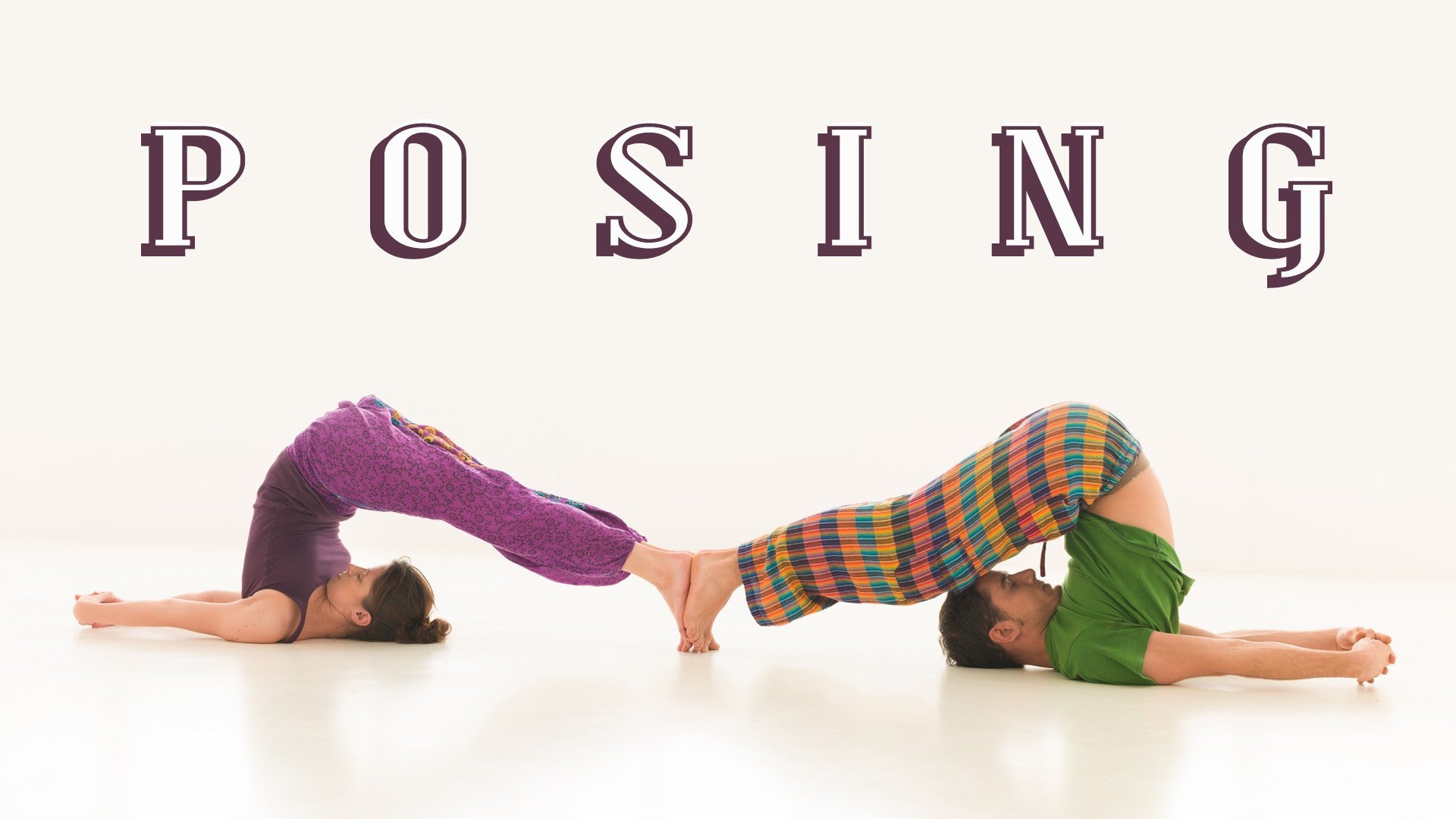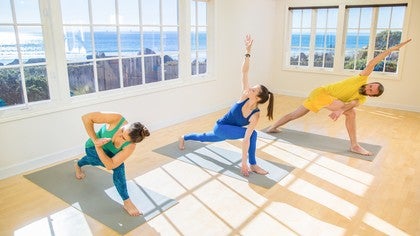Description
About This Video
Transcript
Read Full Transcript
Welcome back. Thank you, Juna, Sarah, and Matt for being here. And thank you for being here. And our friends have been willing to share their personal versions of revolving side angle pose. Not such an easy pose. So let's take a look. So as our friends go into the posture, take a look at how they go into the posture, what they do, how they organize and set up. Beautiful. And we'll try to make it so they don't have to be here too long. So please notice how Juna has come up onto the ball of her back foot.
And she has her hands in prayer position and she's using her elbow against that thigh to revolve and open. Please notice how Sarah also has come up onto the ball of her back foot. And she has chosen to extend her opposite arm across the leg to help her revolve and open. Notice that Sarah and Juna have slightly different gazes. And then please notice how Matt has chosen to leave his back foot at an angle.
He is using this elbow bent and this arm extended. So three totally viable different versions of revolving side angle pose. What I'm going to ask now, will all of you find a lunge shape? Get out of there a little bit. Matt, you stay there for a moment. Sarah and Juna, you guys can find down dog and child's pose as it would feel good.
And so now Matt, if Matt hears the instruction, draw this hip back. If he really wants to draw this back hip back, you'll notice he's got to come up onto the ball of that foot. And he's got to bring that back hand down. Most of you know this is twisting lunge, right? So the twisting lunge is the beginning of revolving side angle pose.
Beautiful, Matt. Now if he wants to keep this hip back, he's got to stay on the back ball of that foot. And then maybe, Matt, just for fun, just see what it would be like. Gorgeous. Gorgeous. And then maybe challenge your balance just a little bit by finding that prayer twist.
See how that might work out. Awesome. Pressing your palms together will help brighten your heart. So beautiful. Gorgeous. Okay. Take a break. Lunge, dog, child.
Nice. And so the play as we approach these postures, I mean, we want to play with the instructions as directionals, because as we can feel these instructions as directionals, it's curious and fun to find out what our body might be willing or not so willing to do. But the play is to notice how the whole system is responding. So the instruction of that side angle, of drawing the hip back, how that requires that other foot to roll up, and then balancing these two things. Okay. Thanks for being here.
Let us know how this posture is working for you and what you find yourself doing, because we're in this together.






You need to be a subscriber to post a comment.
Please Log In or Create an Account to start your free trial.